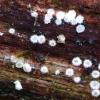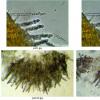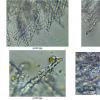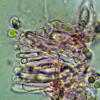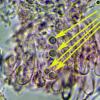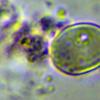
31-01-2017 21:39
 Bernard CLESSE
Bernard CLESSE
Bonsoir à tous,Cet après-midi, j'ai trouvé sur

03-02-2017 19:13
Can someone help with this small asco on the under

25-01-2017 17:50
Roland LabbéBonjour !Voici un disco inconnu de nous. Nous avon

02-02-2017 20:45
 Angel Pintos
Angel Pintos
On Ruscus aculeatusPseudothecia inmersed, visible

31-01-2017 06:51
 Viktorie Halasu
Viktorie Halasu
Good morning,I was given exsiccate of this nice di

01-02-2017 01:30
Roland LabbéBonjour !Voici un Arachnopeziza que nous croyons �
 Bonsoir à tous,
Bonsoir à tous,Cet après-midi, j'ai trouvé sur tiges pourries de houblon un tout petit asco tout blanc avec longs poils qui s'avèrent coniques, à parois épaisses et incrustés-barbelés.
À vrai dire, je ne suis même pas sûr que c'était un asco car aucune spore vue.
Une idée ?
Bernard

Bernard

Bernard
Best, Uwe

Hope makes me live …… I hope to have spores.
Bernard
It remembers me a basidia of Flagelloscypha donkii.
I hope this information could help you in your research.
Kind regards,
M. Torrejón

Great thanks for your information ! I'm waiting spores and I'll check so.
Best regards,
Bernard

I have only one spore but I am not sure that it belongs to this mushroom but as I observed a basid with its sterigmates and it seems to me that it has 4 and that these young spores seem ellipsoid. Also, I send the photo of spore, which is ellipsoid: 10x7,5. On the other hand, in a basidiole, I think I saw 4 nuclei that could be the future spores? And so basidia tetrasporic?
Do these photos give you a better opinion?
Thank you in advance !
Bernard


